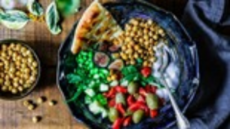Cultural nutrition: How to boost diet compliance in African and Caribbean Diabetes patients

Amanda Moore, public health nutritionist for Healthy Eating & Active Lifestyles for Diabetes (HEAL-D), spoke at the Nutrition Society’s Winter Conference last week (December 5th) and revealed the results of her research into lifestyle interventions needed for Type 2 Diabetes management in the African & Caribbean community.
She pointed out this patient community suffers a disproportionate burden of Type 2 Diabetes but there are many socio-cultural barriers to following guidance provided in the UK.
Her research revealed one clear barrier experienced by these patients is a lack of familiarity with the foods in diet plans.
“Patients said they found it hard to adapt guidance to their cultural foods because they perceived the advice as having to give up foods rather than being able to reduce portions of the food they know and enjoy.
“This group of consumers are used to eating rice in the morning and the afternoon. Rice is core to them and their lives and they tend to have very large portion sizes of it too.”
HEAL-D guidance
The HEAL-D ‘handy guide to carbohydrate portions’ states that limiting your carbohydrate portion sizes in a meal will make it easier for your body to manage your blood glucose levels.
It states that a healthy portion of rice and peas or jollof rice is the size of a flat hand, whilst a healthy portion of yam or plantain is a large fist size and a healthy portion of fufu, gari, kenkey or Amala is the size of a small fist.
The advice also provides guidance as to how much activity is needed to burn off the calories in certain foods. For example, 200g of rice and peas provides 448 calories - expended after 64 minutes of brisk walking.
A portion of fried plantain provides just over 400 calories, which would require a 57 minute brisk walk to burn.
The guide provides calorie counts and associated activity times for a number of culturally relevant foods including palm nut soup, ackee and saltfish and guiness punch.












